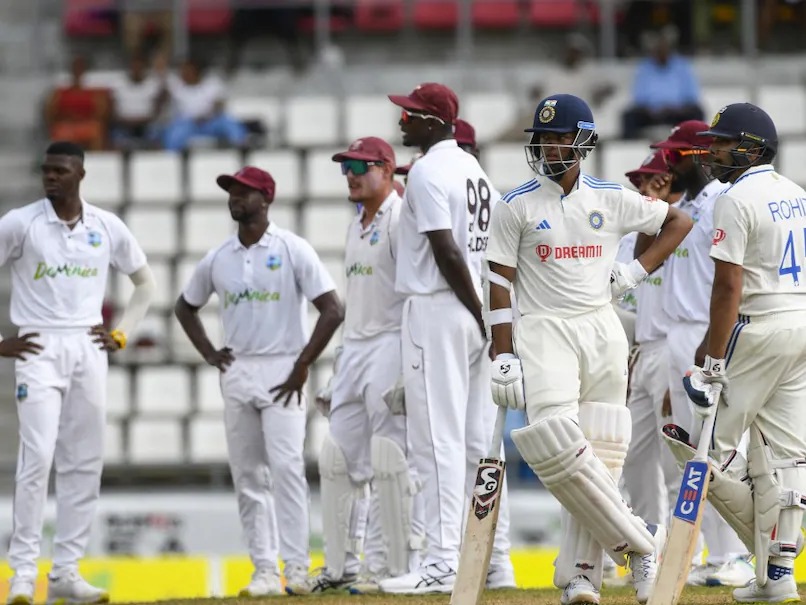The term ‘home advantage’ is almost as old as the game of cricket. It means the host team tuning conditions to its strengths. Mostly, it’s about preparing pitches the visiting side is uncomfortable with. The International Cricket Council (ICC) has imposed sanctions on too much of doctoring of conditions, but home advantage remains everywhere, in varying degrees.
It seems that in the guiding manual of the shoddily run West Indies Cricket Board (WICB), ‘home advantage’ does not exist. Else, why on earth would they roll out a slow surface with assistance for spinners and precious little for the quicker bowlers! That too when their own batters have a poor record against spin and the opposition has Ravichandran Ashwin and Ravindra Jadeja.
This was sort of a shock, reminiscent of Kingston, 2006. Back then, Brian Lara’s team had just about held India in the first two Tests before rain caused another draw in the third. Lara made public his preference for a green and fast pitch for the final Test. That was his team’s best chance. Authorities provided a turner instead, on which Anil Kumble and Harbhajan Singh ended the Test in three days. Nobody other than the authorities knew the rationale of the decision.
The pitch for the first Test in Dominica was not as obvious a turner, but it became clear quite early what kind of bowlers would find more purchase. The new ball had some routine movement and hardly bounced. Ashwin and Jadeja toiled for 38.3 of the 68.3 overs India bowled and shared eight wickets. Three fast bowlers had 26 overs between them. This was a sign of things to come.
Also Read: Ashwin Runs Through Windies Line-up in Emphatic Innings Win
The nature of the strip became really evident on the second morning when Rahkeem Cornwall and Jomel Warrican bowled a few which gripped the surface and turned sharply. In case of Cornwall, there was bounce as well. India were lucky to have two set batters who took few chances and respected the good balls. Other than Yashasvi Jaiswal and Alick Athanaze, nobody from either side including Virat Kohli drove fluently, an indicator of the dubious pace and bounce on the pitch.
In that fourth session of the match itself, it was more or less determined that a lead of 250 would be enough for India to not bat again. They stretched that to 271. Ashwin and Jadeja then accounted for 42.3 of the 50.3 overs India bowled to finish the match in three days. The West Indies batters did not know what Ashwin was doing as he bagged 7/71 for 12 wickets in the match. Other than bowling odd angles, varying the pace and amount of turn, he made the most of what the pitch offered.
There is no answer to ‘why’ the WICB or local authorities opted for this. Their best chance was a green and fast pitch, which would have had everyone in trouble, and not make it as one-sided as it was between Indian spin versus the batting of West Indies. Indians were not too high on confidence after the World Test Championship final defeat and their batters could have been attacked.
Instead of that, the West Indies exposed the weakest part of their armour against India’s biggest strength. Ball coming slowly off the deck, bounce generally low and unpredictable at times, grip and turn and a bunch of batters who appeared to be novices against two of the world’s best spinners — this was nothing but a suicidal move. Rather than challenging the weakness of the opposition, the West Indies increased the vulnerability their most frail part.
The WICB got it wrong on many fronts of late. No control on players choosing T20 leagues over international cricket, inability to make playing for the West Indies more lucrative or finding talent, very little in the coffers and all that is well known. Not understanding ‘home advantage’ is the latest in the growing list chaos and confusion in the cricket establishment of the West Indies.
Also Read: Jaiswal has both talent and temperament to succeed – Rohit Sharma




